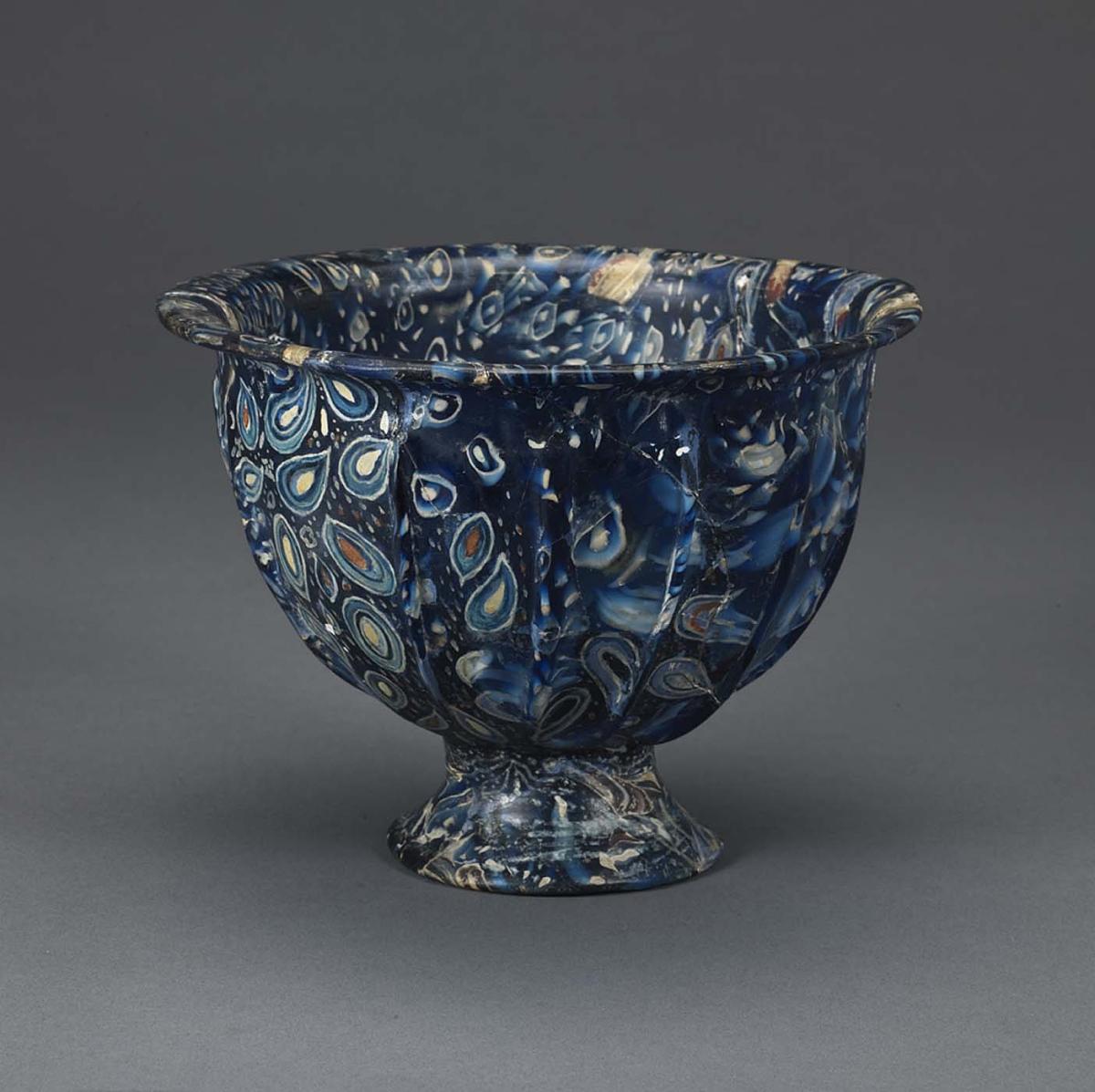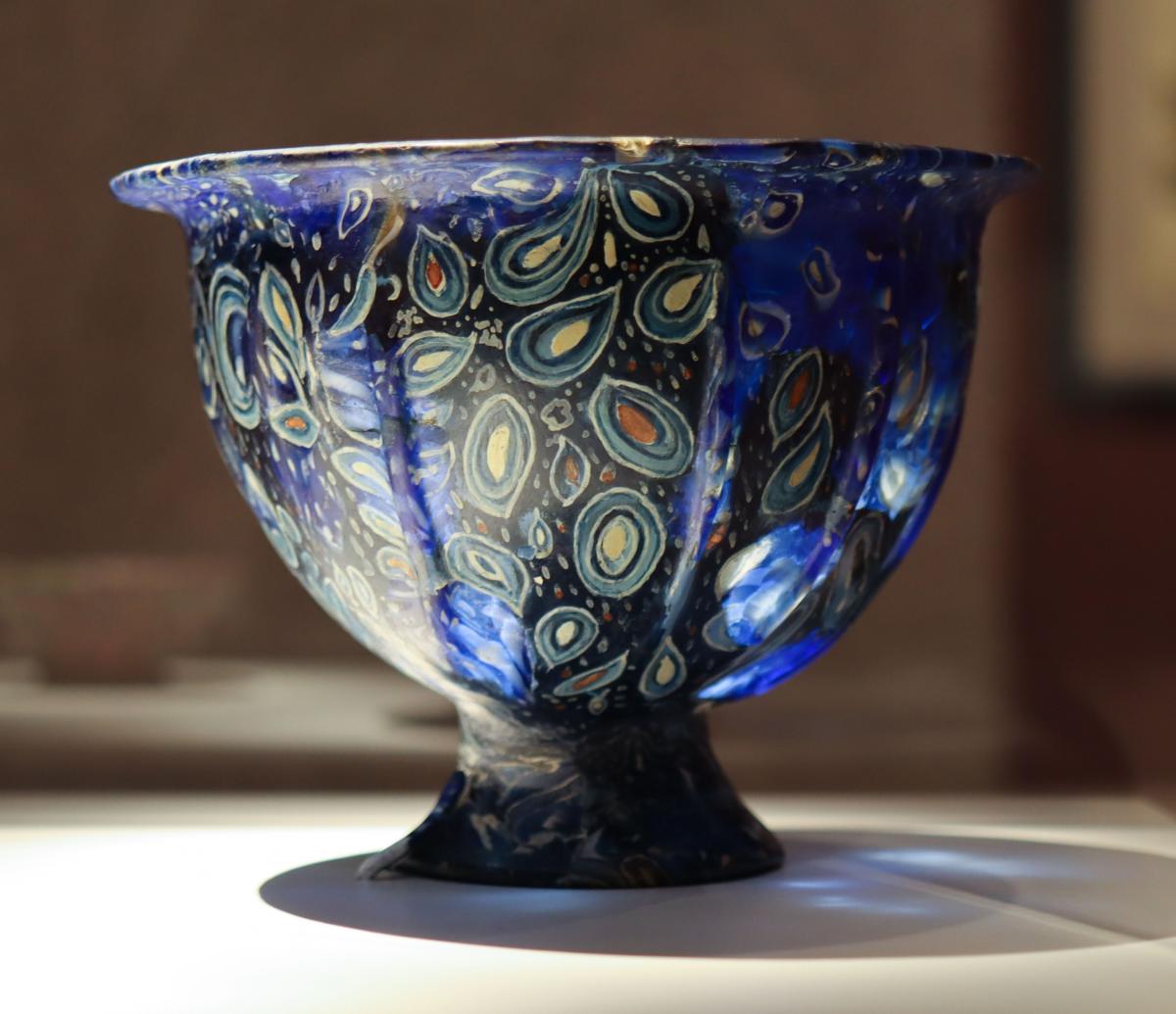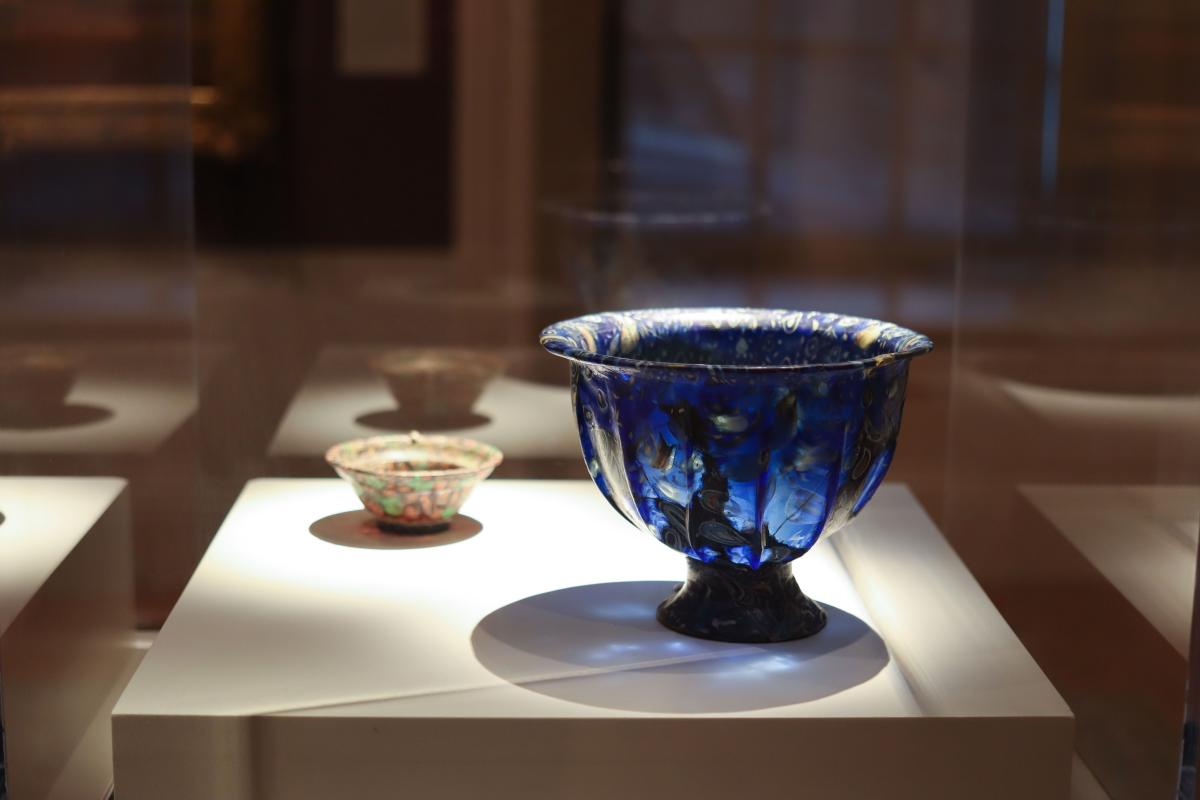One of the exciting aspects of preparing for an exhibition is the possibility of discovery when artworks that have been in storage for decades, in some cases, are brought out into the light. The museum’s conservators look at every object before it is put on public display. Often their work reveals information about an object that adds to the understanding of its creation, use, and history. SAAM Conservation Intern Katya Zinsli talked with Eye Level about what she learned when examining a Roman glass mosaic bowl that is included in the exhibition Sargent, Whistler, and Venetian Glass: American Art and the Magic of Murano.
Tell us about the Roman mosaic glass bowl you examined.
A hidden gem in SAAM’s Sargent, Whistler, and Venetian Glass exhibition is a reassembled Roman mosaic glass bowl that dates to the 1st century BC-1st century AD from the museum’s Gellatly Collection. John Gellatly was an avid collector of antiquities and fine art in the late nineteenth and early twentieth centuries. He gave his substantial collection to SAAM in 1929. Surprisingly, this artifact had never been exhibited, remaining in storage for nearly 100 years, which meant a century of dirt, deteriorating fills, and yellowing paint existed on this bowl, creating quite the challenge for SAAM conservators and curators to determine the best course of action for displaying the bowl.
What initial steps did you take to understand the object and determine the best course of action to prepare the artwork for the exhibition?
Before any treatment work begins, conservators employ observational tools, such as magnification and light, to assess and describe an object in detail. We investigated manufacturing techniques, compared this object to similar objects in other museum collections---including the Metropolitan Museum in New York and the Victoria and Albert Museum in London---and consulted with experts in Roman glass construction to form a picture of how the original bowl was constructed.
This glass bowl has a mosaic pattern of translucent blue and opaque canes, mold-formed with an obliquely curved rib pattern. Three design patterns can be identified:
-
a white dot with concentric, alternating blue and white rings
-
the same pattern with the addition of eight white dots around the rings
-
eight white dots in a circle around a blue core
Additionally, clear and red fragments of glass are embedded in the blue mosaic glass. These patterns and designs are stretched, which gives us a clue to how the bowl was made. Sections of glass canes (like pieces of a long candy cane cut into round bits) with the previously mentioned patterns were arranged side-by-side and fused together on a ceramic plate in a kiln to create a flat round disk. To achieve the ribbing, the flat disk was pressed with a ribbed mold, then slumped over an inverted bowl-shaped ceramic mold, and softly heated to form the shape. The blue and white marbled base ring was formed by slumping or picking up bi-colored glass onto a blowpipe and inflating it into shape. The base ring was attached to the bottom of the bowl and both heated again to refine the shape and flare the rim. Both the inside and outside of the bowl have parallel scratches, which tells us the Romans used rotary-polishing after the bowl was finished.
Did you discover anything unusual during the examination?
We were surprised to find more than translucent blue and white glass – about half of the bowl was made from plaster with painted designs!
Since no records show the plaster was added at the museum, it must have been completed prior to the collection being acquired in 1929. This type of restoration was common in the nineteenth century. Ancient glass was highly prized at the time and even individual shards would have garnered appreciation from collectors. Though the blue bowl is missing much of the original glass, it is rare that fragile materials like glass survive intact from the Roman world. We were left to wonder: did Gellatly buy it whole or in fragments? Was the bowl restored during his ownership or did he buy it with these plaster reconstructions? It is likely that he purchased the bowl assembled with the plaster fills painted with artistic approximations of the glass design.
It is uncommon for old plaster fills such as these to survive in a museum collection. They are typically removed by modern conservators in favor of using transparent materials or separated from non-original materials into the shards.
How do the nineteenth-century repairs integrate into the ancient Roman glass?
Looking closer at the nineteenth-century restoration of painted plaster fills, the color scheme and painted design over the opaque fills do not truly correspond with the patterning of the blue and white (and sometimes red, purple, and clear) canes of the glass, try as it might. The restoration has a more artistic quality to it, with the addition of paisleys and concentric circles created with a color scheme of gradated blues, whites, and reds. The most prevalent indicator of artistic liberties lies within the bottom of the bowl, where the restorer painted a flower-like design to center the rest of the bowl, fills and glass alike, even though a central motif such as this does not exist in similar Roman bowls.
As whimsical as these repairs are, they wouldn’t be done by professional conservators today. Nineteenth century restorers did not have translucent fill materials to blend with the original glass. Before the invention of plastics, they used plaster or wax. They didn’t have clear adhesives either – nineteenth century glues were often made of animal products that had naturally tan or brown tones. Perhaps the person who was tasked with assembling the fragmented bowl chose an artistic approach to integrate the fills since the bowl would inevitably look far different from when it was originally produced?
How have current conservation methods affected your decisions about how to treat this object?
Today we have modern materials and techniques which assist in preserving the original aesthetic of the object, such as synthetic polymers like resins and acrylics. When choosing materials to assemble fragmented glass vessels like this bowl, conservators think about material characteristics such as refractive indices, moldability, strength, and thixotropic properties.
Additional questions conservators might ask are:
-
Are the fill materials and adhesive appropriately transparent and can they be tinted with dry pigments or paint to mimic the original?
-
How can the filling material be shaped without damaging the original glass? Is the joining adhesive weaker than the glass itself and is it reversible?
-
How do the properties of the adhesive inform how they are applied?
-
Is it important for the repair to closely align with the original intent (decorative or practical use)?
-
Is highlighting the craftsmanship most important? Does the vessel even need to be whole to tell its history?
Conservators today can complete repairs which appear closer to the original in both transparency and color. Depending on the type of museum or the intended context, conservators may choose to retain or remove past restorations. Archaeological museums may pursue repairs with sympathetic modern materials or allow the shards to stand alone – options to emphasize the original glass—while an art museum might emphasize different considerations.
Here at SAAM, we decided not to remove the nineteenth-century painted plaster fills, leaving intact the state in which the bowl was likely purchased by Gellatly and displayed in his home. We cleaned and stabilized the restorations, filling any gaps between the plaster and glass and painting the new fills to match. The goal was to embrace the nineteenth-century aesthetic of the bowl and reveal how collectors of the time would have interacted with it as a prized antiquity, intact or not.























